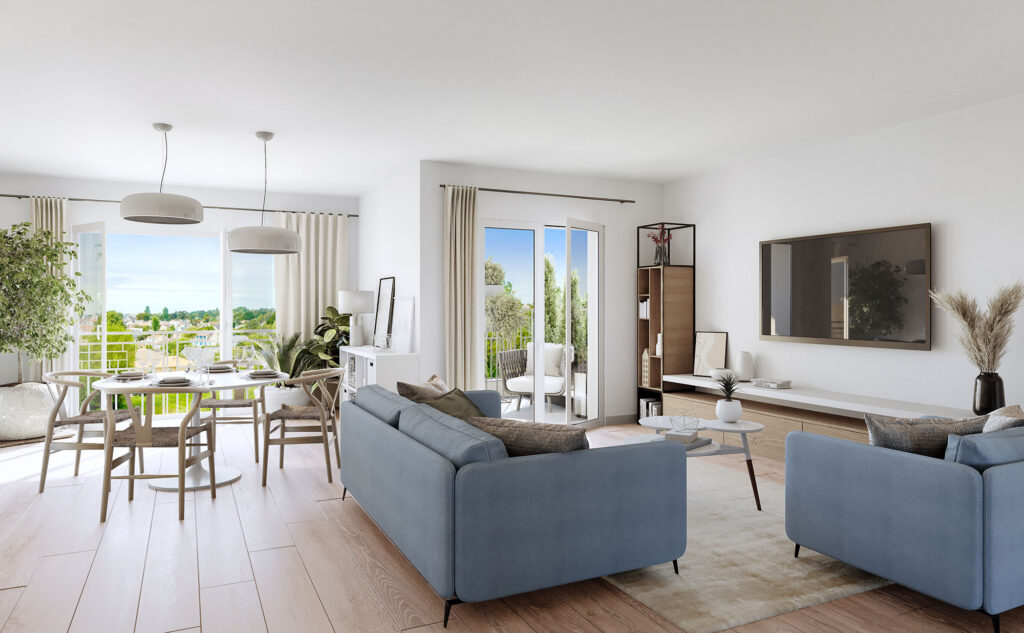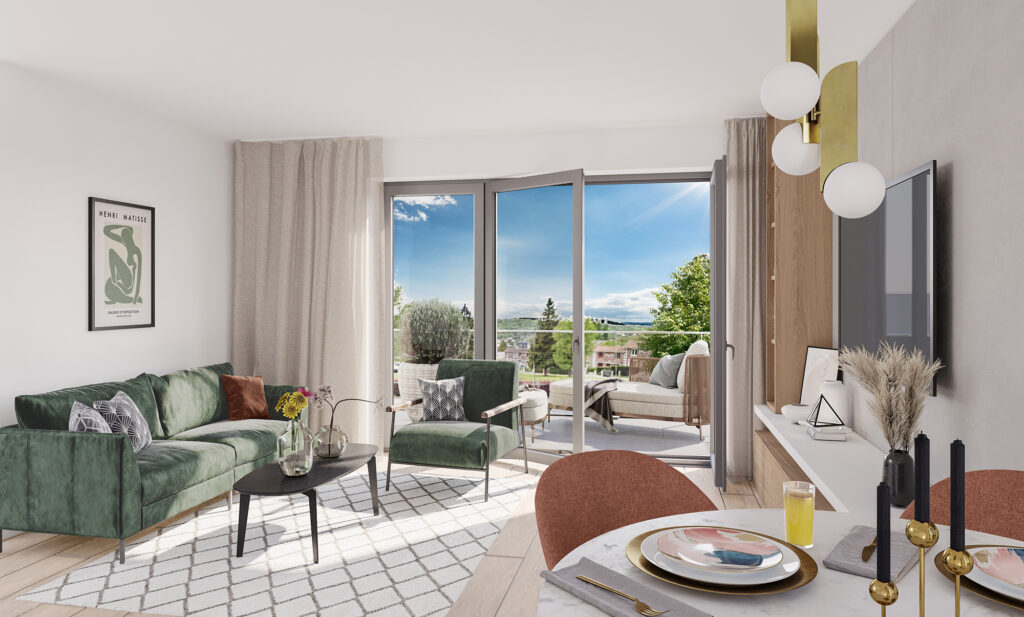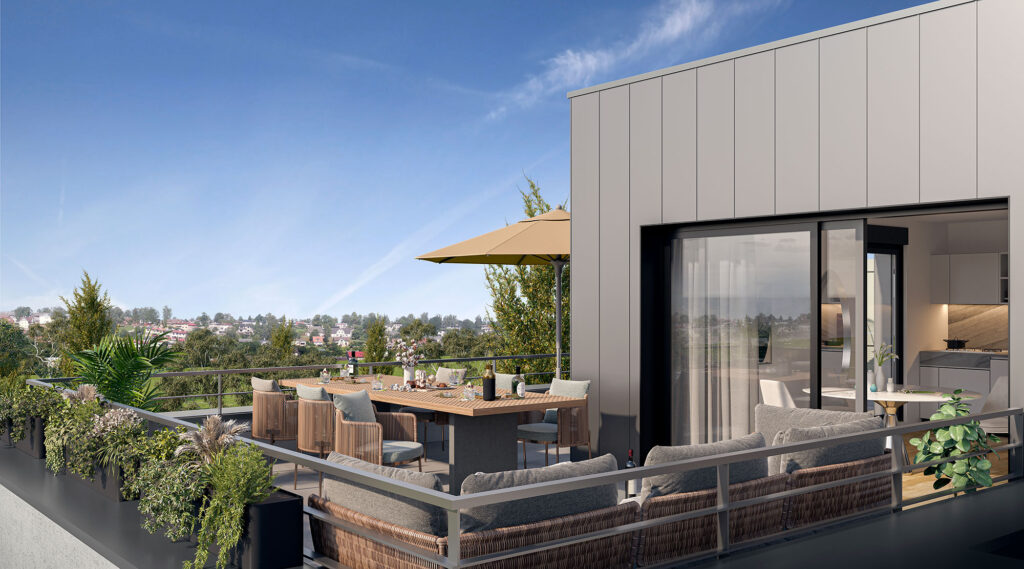In the dynamic world of real estate, where every project counts and every detail makes a difference, 3D modeling has established itself as an indispensable pillar. It offers professionals an innovative and effective way of designing, presenting and marketing real estate.
Thanks to its evolution over the years, it has become a key tool for everyone involved in the real estate industry: architects, builders, developers and real estate agents. Find out more about 3D modeling software and tools, and how they are shaping the future of real estate.
What 3D modeling tools are available for real estate?

Today, every real estate project requires the use of 3D modeling tools. Improving the construction process and property marketing, these tools have become indispensable over the years.
The evolution of 3D modeling tools
The beginnings of 3D modeling in real estate go back to the 60s and 70s.
- 1960s - 1970s: architects and developers represented properties with cardboard or plastic scale models.
- 1980s: digital technology began to emerge with the first CAD software and its use by professionals.
- 1990s: CAD software multiplies and reaches the general public thanks to Open Source software such as Blender.
- 2000s: the Internet makes it possible to create 3D image libraries, particularly for real estate.
- 2010s: thanks to the power of computers, 3D real estate software is gaining ground. The Internet also makes it possible for those involved in a real estate project to work together online.
Real estate 3D modeling software is becoming increasingly powerful. They enable you to produce plans, models and perspectives in record time.
Their high-quality rendering offers a truly immersive experience, making them more attractive to home users. What's more, they are becoming more affordable, making them high-performance tools with professional rendering.
As technology advances, 3D is being accompanied by virtual reality and augmented reality. These tools take immersion to the ultimate level, offering the means to visit a property from a distance.
Thanks in no small part to the health crisis, potential buyers are even asking for these 3D visuals.
Today's modeling tools offer a wide range of 3D solutions for buyers, architects' clients, property developers and investors: virtual visits, 3D perspectives, 3D models, 3D plans, and so on.
The advantages of 3D modeling
Still booming, 3D real estate modeling benefits all players in the real estate industry: architects, property developers, real estate agents. It can be used at any time, from construction to sale.
Realistic visualization
The realism of 3D modeling makes it a must. 3D visuals allow you to capture all the details of a property or real estate asset:
- Volumes: you'll find it easier to understand elements such as floor area and ceiling height when planning future layouts;
- Textures: discover the full range of textures on furniture, walls, floors and ceilings (concrete, leather, tiles);
- Decorations: you can add 3D images as interior decorations: furniture, pictures, vases, cushions, lamps, etc.
- Shadows and lighting: for maximum realism, work with natural lighting or light in front of shades and lamps.
Depending on your expectations, 3D real estate modeling allows advanced personalization down to the smallest detail. With a high-quality image, you're more likely to win over a potential customer or buyer.
Best real estate marketing
In marketing terms, 3D modeling can be used to promote real estate projects through a variety of channels. In fact, a 3D model or plan is an excellent way of presenting a project to investors or customers.
Its use is not only essential for a better understanding of the project, but also reinforces your credibility.
Thanks to their adaptability to all media, you can showcase your 3D visuals on your social networks, website or online portfolio. They arouse the interest of your customers and provide decision keys for buyers and investors.
For example, a 3D floor plan provides an in-depth understanding of the interior layout and number of rooms, while a scale model gives full details of the house's structure. This visual information makes it easier to conclude a contract with buyers.
Reduce costs and errors
3D technology also facilitates internal and external communication for any real estate project. Thanks to 3D images, all project stakeholders can work and communicate seamlessly.
Images allow you to show your customers their future apartment or show them certain details. During the construction phase, 3D modeling provides architects, developers and craftsmen with a clear, detailed vision.
These tools are indispensable for detecting design errors before construction. This avoids the need for costly modifications to a building that has already been built, saving you considerable time and money.
Which 3D real estate modeling software should I use?

3D modeling software designers are constantly innovating to bring high-performance tools to the market.
Advanced software allows you to work with a wide range of features and offers high-definition rendering, while mobile applications facilitate more basic creations.
3D modeling software
The market is currently full of 3D design tools for the real estate industry. For basic use, i.e. simply building three-dimensional plans and models, there are a few options available.
| TinkerCad | This software developed by Autodesk is particularly suitable for beginners. It lets you create 3D shapes and simple interior and exterior spaces. |
| RoomSketcher | It allows you to arrange the interior of a room, create floor plans or add furniture. |
| Sketchup | Popular with the general public, this software lets you model buildings, floor plans and even interior design. |
| Kozikaza | A very popular tool, it lets you draw, furnish and decorate your 3D plan. |
Some other 3D modeling programs offer much broader functionality, suitable for professional use. The use of these softwares sometimes requires very advanced knowledge to deliver quality renderings.
| AutoCAD | It lets you design 3D plans and surfaces. The Civil 3D version works with BIM (Building Information Modeling) and offers the possibility of building infrastructures in collaboration with other stakeholders. |
| Autodesk 3ds Max | This 3D modeling software offers complete solutions: 3D, animation for architecture and other fields. What's more, it allows you to design elements such as custom furniture and decorations, while remaining easy to use. |
| Blender | Blender is one of the most powerful programs on the freeware market. What's more, it offers a comprehensive range of tools for texturing, 3D sculpting, lighting and 3D animation. |
Mobile applications for 3D modeling
In addition to the ability to take 360° photos on smartphones, a number of 3D applications are emerging. Among them, you can download :
| MagicPlan | This easy-to-use tool can be used to produce a 3D plan, a plot report or even price estimates. This application is also ideal for interior renovation, to visualize future changes. |
| Home Design 3D | This app offers a wide range of features for interior design, thanks to its library of objects. Extremely easy to use, it also lets you design advanced floor plans and share projects. |
| Planner 5D | This application offers exterior and interior design options, as well as complete 3D design. You can even create your own landscaping. |
3D real estate modeling software is constantly innovating to improve rendering and ease of use. Nevertheless, most of them still require expert hands.
If you're looking to create professional-quality 3D perspectives, models or plans, you can leave it to the professionals.
Looking for a 3D professional?
Let's get to know each other








